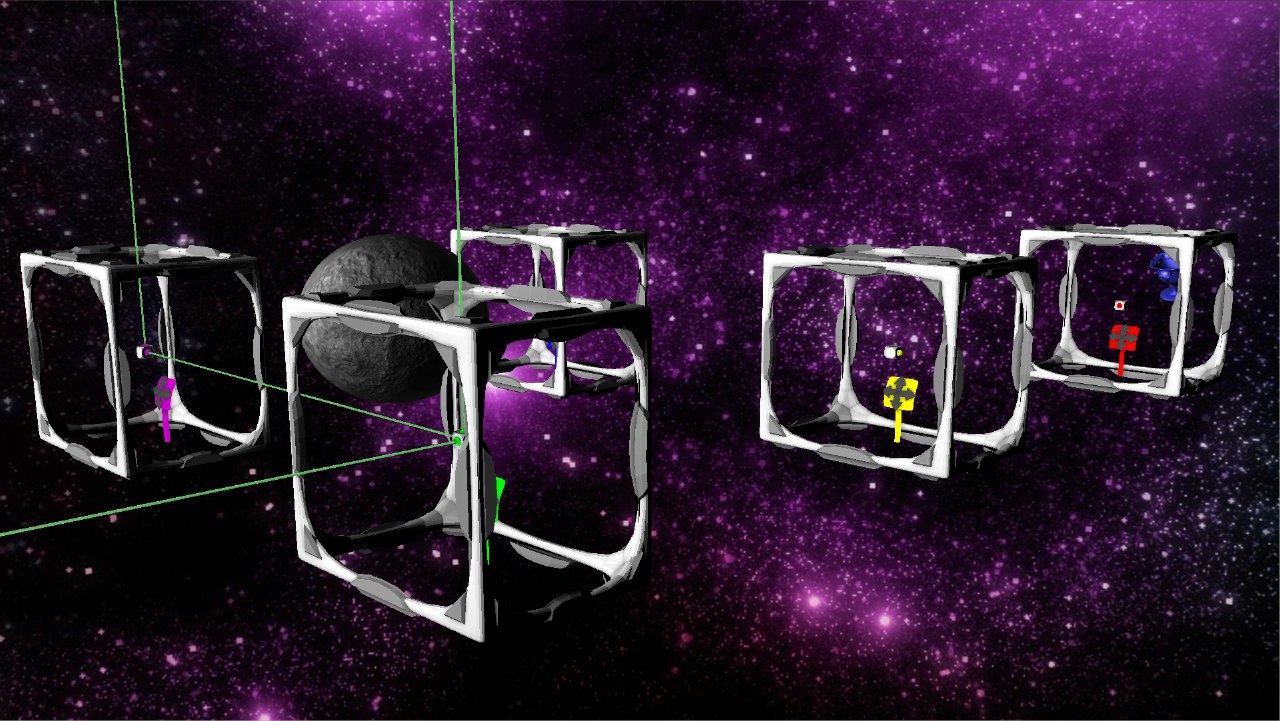Back in the winter semester of 2013/14, during my undergraduate studies, I had my first encounter with virtual reality through a project on the Oculus Rift. Guided by the Virtual Reality and Visualization group at Bauhaus University Weimar, alongside four peers, including my close friend Sebastian, I started to make some steps into the world of VR, a field that was just beginning to reveal its potential. Little did we know then, this project would significantly shape our academic and professional futures, with several of us, including Sebastian, Tim, and myself, pursuing doctorates in virtual reality.
The Oculus Rift was one of the first plug-and-play hardware pieces that supported stereoscopic vision, allowing us to immersive ourselves into digital realms. As one of the first VR headsets to combine a high frame rate with low latency at an affordable price, it played a crucial role in igniting the VR enthusiasm that has only grown over the decade. Its gyroscope sensor offered a novel experience, allowing us to look around in a virtual space as naturally as in the real world.
Our project’s aim was straightforward yet challenging: integrate this new headset into the chair’s existing VR systems. We focused on several key areas: enhancing the viewing experience, enabling intuitive navigation and manipulation within virtual environments, and developing a sense of self and other avatars within these spaces. These goals required us to not only work with the Oculus Rift but also to dive deep into our VR framework, avango, and its renderer, guacamole, to create a truly immersive experience.
Particularly memorable was our work on avatar representation, aiming to create a virtual presence that felt as real as possible. This aspect of the project was not just about visual fidelity but about connecting users to their digital selves and others within the virtual environment, a crucial step for immersion.
Building on the solid foundation laid during the initial phase of our project, we made significant progress in extending the capabilities of our VR framework. Before the semester concluded, we had successfully integrated a prototype of Kinect avatars into the system. This early achievement opened up new avenues for further development and experimentation, allowing us to explore playful and creative applications of our work.
In an effort to enhance the sense of presence within the virtual environment, we introduced robot avatars as a simpler form of embodiment. Additionally, we employed tracked hand-held devices to represent the user’s hands to the HMD wearer. This innovation significantly improved the feeling of self-perception for the user, deepening the immersive experience of the virtual reality headset. Building on this, I took the initiative to augment the hand representations with various manipulation gadgets. These tools enabled users to interact with the virtual environment in more nuanced ways, such as scaling objects, changing their colors, or simply moving them around.
The functionalities we developed laid the groundwork for a burst of creative energy among the team. We engaged in brainstorming sessions that generated a wealth of ideas for VR games and additional features, demonstrating the project’s potential to inspire future innovation. One particularly ambitious idea was the integration of stereographic portals into our system, coupled with the development of a game that leveraged these portals in its gameplay mechanics.
The game we envisioned was a puzzle maze set in space, where the player starts inside a cube and must manipulate small mirrors to direct a beam of light into adjacent cubes. Successfully directing the light beam would open portals to these new spaces, sometimes requiring the player to move objects that obstructed the beam’s path. The ultimate objective of the puzzle was to navigate through the maze to reach a designated space cube. This game concept not only showcased all the features we had developed—including viewing, navigation, manipulation, and the use of portals—but also served as a practical demonstration of how these elements could be integrated into a cohesive VR experience.
Reflecting on this project, I am filled with a sense of pride and accomplishment. It was an incredible journey that not only deepened my understanding of virtual reality, programming, and game design but also highlighted the power of collaboration and innovation. This project was more than just an academic assignment; it was a transformative experience that has left a lasting impact on my approach to technology and creativity.
